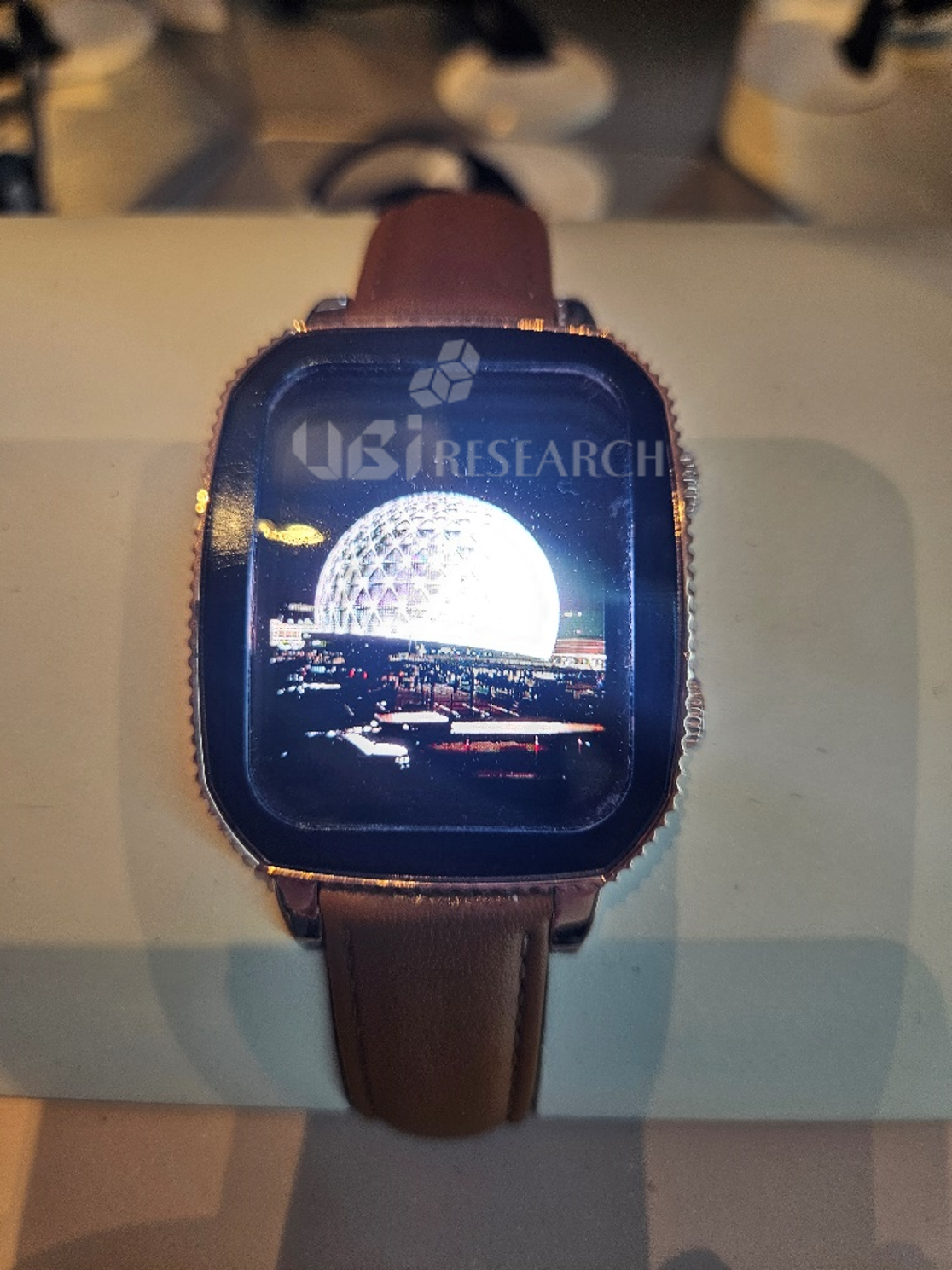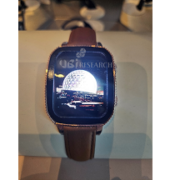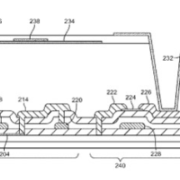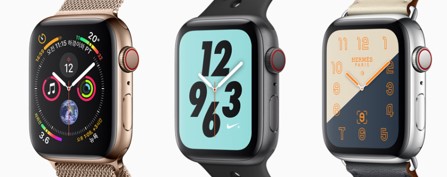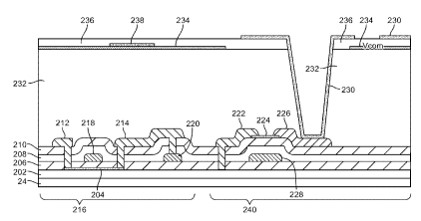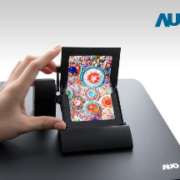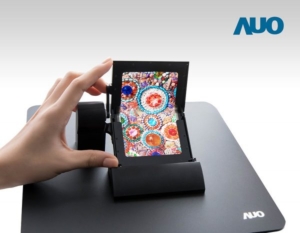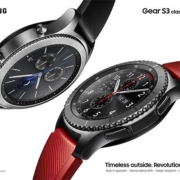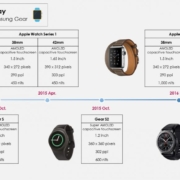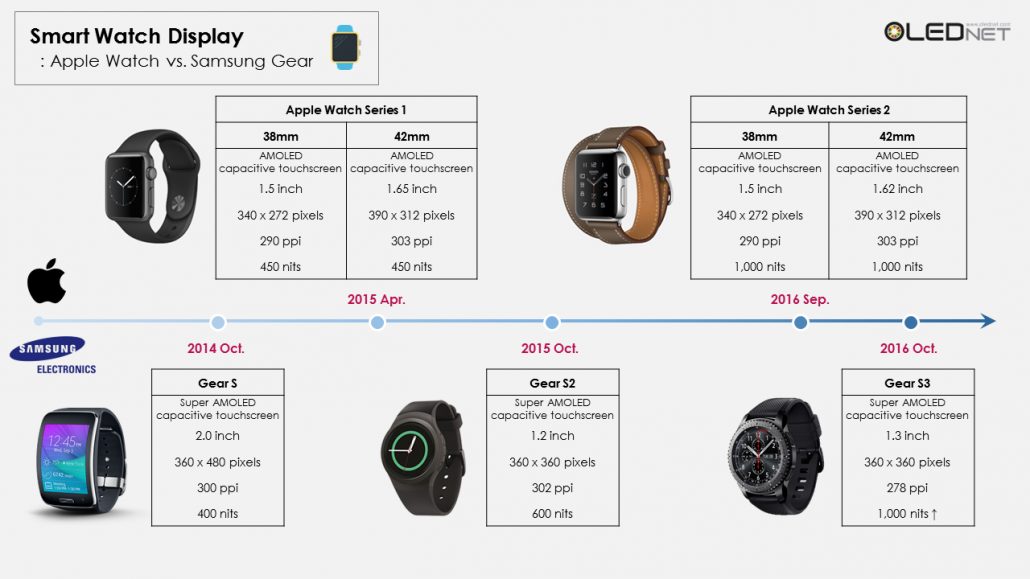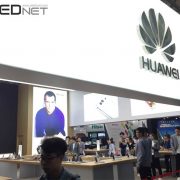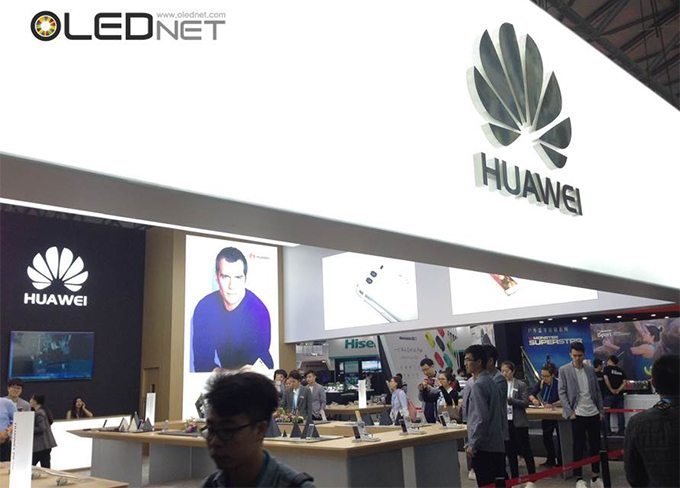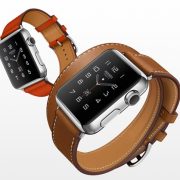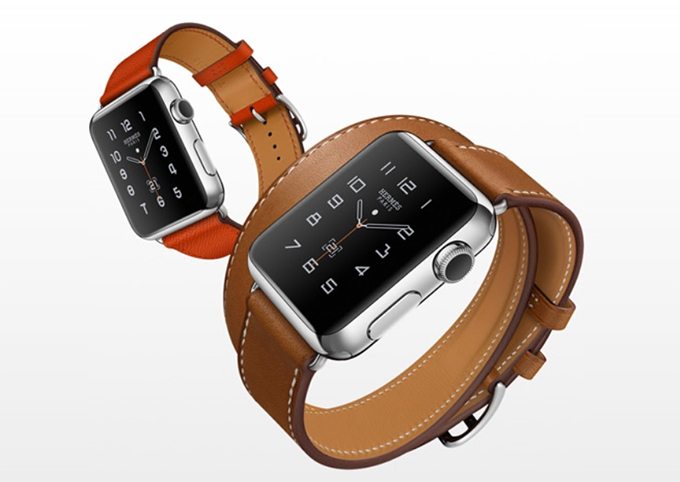
Apple Watch(Source=Apple)
Hyunjoo Kang / Reporter / jjoo@olednet.com
With the trend of smartwatch market’s below expectation growth, some believe that this year’s Apple Watch shipment volume will decrease by 25% or more compared to last year.
On 19 April, international media such as OLED-a reported this citing KGI investment. KGI’s research estimates that 10,600,000 units of Apple Watch were sold in 2015, and forecast that much reduced 7,500,000 units or less will be sold this year. What is worse, last year’s sales volume is the total of 8 months sales, and this year’s forecast volume is for 12 months.
KGI suggested 2 reasons for this decrease.
First, this is because the wearable device market is still an immature one, formed not too long ago.
Second, the product itself still has many flaws. Also, of the wearable applications, there is a lack of killer application that pulls in consumers. Hardware also needs further improvements. Short battery lifetime and iPhone dependent functions are analyzed to be factors preventing the demand increase.
KGI forecasts the mass production of the next Apple Watch will begin in Q3 2016. Some estimates that the next product will be released before that in June this year. However, this product is more of an S model upgrade with few changes to the existing product. KGI estimated that the demand improvement will take place when 2017 product, the new product after this one is released.
Much like the not so optimistic forecast of Apple Watch, the smartwatch market growth is also not meeting the expectations. In 2016 Wearable Smart Device International Forum and Exhibition held in Seoul hosted by Korean Display Industry Association, IDTechEX’s analyst James Hayward explained that smartwatch market is growing at below expectations, and it is estimated that eye wear market, such as AR and VR, will have greater growth rather than watch.
